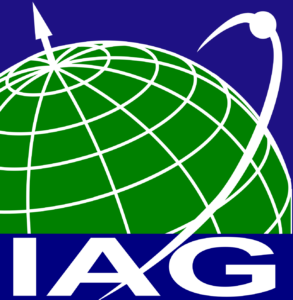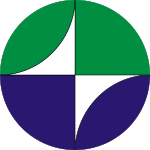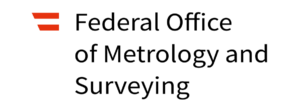JSG T.49 High-resolution probing of the troposphere and ionosphere
Chair: Michela Ravanelli (Italy)
Affiliations: Commission 4, GGOS (Geohazards Monitoring, GSWR)
Terms of Reference
Nowadays, geodetic measurements are routinely used to probe the Earth’s atmosphere both from space and ground. In detail, tropospheric and ionospheric sounding is more and more essential in a variety of applications.
Tropospheric sounding has an important role both in meteorology, in weather forecasting and nowcasting. Global Navigation Satellite Systems (GNSS), GNSS Radio Occultation (GNSS-RO) and Interferometric Synthetic Aperture Radar (InSAR) are the most common used techniques. GNSS and InSAR can be used in complementary way, whereas the GNSS-RO and GNSS can act in a synergistic way.
Through the integration of the afore-mentioned techniques, this JSG aims to improve the high resolution of tropospheric sounding in both zenith and slant directions. In this background, our goals involve studying of severe weather events, the impact of lowcost instrumentations and/or moving platform observations on assimilation approaches, numerical modelling and tomography. The final outcome will help to enhance the real-time capability of models for severe weather nowcasting. To this point, the use of highperformance computing platforms should be encouraged. Furthermore, tropospheric observations could increase the knowledge on the effects and monitoring of climate change.
GNSS-TEC and GNSS-RO offer complementary insights into the ionosphere. The former provides horizontal information on electron content, while the latter offers altitude-wise profiles of electron contents. These observations play a fundamental role in the analysis of natural and man hazard-related ionospheric perturbations, being useful to enhance early warning systems. In this direction, this JSG fosters the improvement of real-time ionospheric monitoring. Data-driven and model-based methodologies for realtime detection of earthquakes and tsunamis should be also improved and integrated into operating tools. The sharing of local GNSS data coming from regional network and private space company (Spire, CubeSats) as well and from moving platform and low-cost instrumentations (smartphones, single-frequency receivers) should be bolstered, going towards a denser ionospheric coverage especially over the oceans. These denser ionospheric observations are necessary to improve the reliability of ionospheric maps (both regional and global) for TEC forecasting and nowcasting, being useful for space weather monitoring, as the 2022 Starlink satellite loss event showed.
The opportunity to reconstruct the 3D ionospheric structure (ionospheric tomography) is increasing thanks to the use of LEO nanosatellites equipped with GNSS (e.g., Astrocast).
Furthermore, studies related to the impact of tropospheric events such as lightning and severe convective weather in the ionosphere should be encouraged. Indeed, these events are about to increase in frequency due to climate change variability. Nonetheless, these investigations should also be fostered to overcome the compartmental use of geodetic observations, typical of the academic world, to gain a holistic and comprehensive angle on the lower/upper atmosphere coupling.
Ultimately, machine learning plays an increasingly significant role in forecasting and nowcasting parameters in tropospheric sounding, as well as in detecting natural hazards for early warning systems. In this regard, fostering interrelation and collaboration with JSG 48 about foundations of machine and deep learning in geodesy is crucial to harness the expertise from both fields.
Finally, it is clear that this unprecedented dense coverage of troposphere and ionosphere sounding enabled by commercial all available ground and spacebased geodetic techniques represents a great opportunity for future investigations in Earth sciences. This underscores the importance of integrating different techniques and products to fully harness their potential and extract optimal information. This is the reason why it is worth having a JSG about highresolution probing of the troposphere and ionosphere using geodetic techniques within the ICCT.
Objectives
• To produce inventories of:
– commercial and publicly space and groundbased geodetic techniques, with a distinction between troposphere and ionosphere observations, and a classification based on the different acquisition parameters (e.g., sampling rate, vertical or temporal resolution, altitude range of acquisition, tracking mode),
– present and desired applications of dense troposphere and ionosphere sounding for science and engineering, with a special concern to the estimated physical quantities (e.g., temperature, pressure and TEC), in order to focus on related problems (still open and possibly new) and draw future challenges.
• To address known problems related to dense troposphere and ionosphere sounding using geodetic observations as (not an exhaustive list): natural-hazard anomalies detection, localization and classification; revision and refinement of inversion techniques; temporal variability of receivers DCBs and evaluation of their impact in the calibrated process; data quality assessment and validation; outlier detection and removal; in-situ sensors evaluation, cross-calibration and integration.
• To describe the different analytical and physical implications of combining observations collected with different observational geometries, such as: ground-based receivers tracking signals transmitted by GNSS satellites in MEO and GEO orbits; space-based receivers tracking GNSS signals at different elevation angles (from positive to negative and vice versa). Furthermore, investigate the different ways of combining together these remote sensing observations to retrieve fundamental atmospheric parameters, and disentangle the spatial and temporal variability of the atmosphere.
Program of Activities
• To participate at IAG assembly in 2025 in Rimini
• To organize a session at the forthcoming Hotine- Marussi symposium in 2026
• To convene at international conferences such as IAG/IUGG, EGU, AGU
• Interacting with JSG T.48 about foundations of machine and deep learning in geodesy
Members
Michela Ravanelli (Italy), chair
Elvira Astafyeva (France)
Gregor Moeller (Austria)
Alessandra Mascitelli (Italy)
Eugenio Realini (Italy)
Lucie Rolland (France)
Szabolcs R.zsa (Hungary)
Elisabetta D’Anastasio (New Zealand)
James Foster (Germany)
Giorgio Savastano (Luxembourg)
João Galera Monico (Brasil)
Maria Virginia Mackern (Argentina)
Damian Tondaś (Poland)



